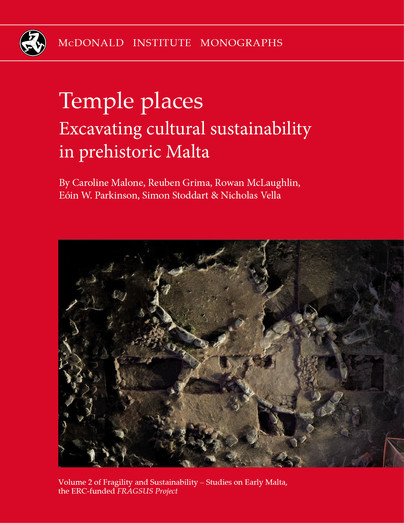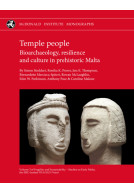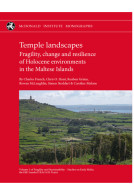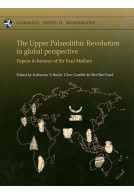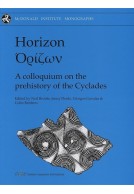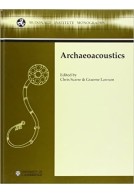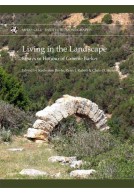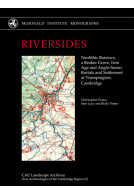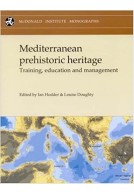Temple Places (Hardback)
Excavating cultural sustainability in prehistoric Malta
Series: Fragility and Sustainability - Studies on Early Malta, the ERC-funded FRAGSUS Project
Pages: 552
ISBN: 9781913344023
Published: 31st December 2020
Casemate UK Academic
(click here for international delivery rates)
Need a currency converter? Check XE.com for live rates
The ERC-funded FRAGSUS Project (Fragility and sustainability in small island environments: adaptation, culture change and collapse in prehistory, 2013–18) led by Caroline Malone (Queen’s University Belfast) has focused on the unique Temple Culture of Neolithic Malta, and its antecedents and successors through investigation of archaeological sites and monuments. This, the second volume of three, presents the results of excavations at four temple sites and two settlements, together with analysis of chronology, economy and material culture. The project focused on the integration of three key strands of Malta's early human history (environmental change, human settlement and population) set against a series of questions that interrogated how human activity impacted on the changing natural environment and resources, which in turn impacted on the Neolithic populations. The evidence from early sites together with the human story preserved in burial remains reveals a dynamic and creative response over millennia. The scenario that emerges implies settlement from at least the mid-sixth millennium bc, with extended breaks in occupation, depopulation and environmental stress coupled with episodes of recolonization in response to changing economic, social and environmental opportunities. Excavation at the temple site of Santa Verna (Gozo) revealed an occupation earlier than any previously dated site on the islands, whilst geophysical and geoarchaeological study at the nearby temple of Ġgantija revealed a close relationship with a spring, Neolithic soil management, and evidence for domestic and economic activities within the temple area. A targeted excavation at the temple of Skorba (Malta) revisited the chronological questions that were first revealed at the site over 50 years ago, with additional OSL and AMS sampling. The temple site of Kordin III (Malta) was explored to identify the major phases of occupation and to establish the chronology, a century after excavations first revealed the site. Settlement archaeology has long been problematic in Malta, overshadowed by the megalithic temples, but new work at the site of Taċ-Ċawla (Gozo) has gathered significant economic and structural evidence revealing how subsistence strategies supported agricultural communities in early Malta. A study of the second millennium bc Bronze Age site of In-Nuffara (Gozo) likewise has yielded significant economic and chronological information that charts the declining and changing environment of Malta in late prehistory.







